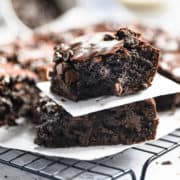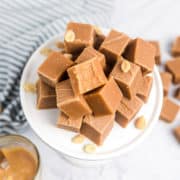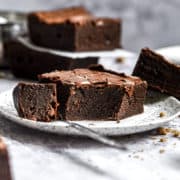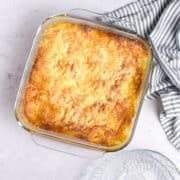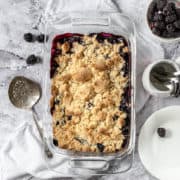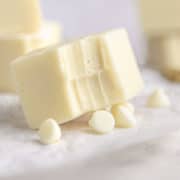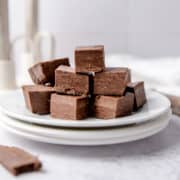Everyone has their own favorite kind of cheese, and there is certainly a lot to choose from. Once you know how to store cheese the best way, you might like to experiment with different kinds of harder cheeses, softer cheeses, spreadable cheese products, and so much more.

Jump to:
Cheese has to be one of the most versatile, delicious foods there is. You can enjoy it as a snack or have several of your favorite cheeses on a cheese board or mixed cheese plate. I love room-temperature cheese with crackers, and firm cheeses are just as tasty as soft ones. There are just so many kinds of each to try, making the combinations just about endless.
Just about every type of cheese can be used in cooking and feature in many recipes from pizza and pasta-based dishes to sweet ones like cheesecake recipes. If you love cream cheese, I heartily recommend this churro cheesecake as well as raspberry cheesecake cookies. Oh, and New York-style baked cheesecake is really hard to beat!
What is Cheese?
Cheese has been around since 8000 BC when the first sheep were domesticated. Every cheese begins with milk, culture, enzymes, and salt, but there are so many different kinds to choose from. In fact, there are more than 1800 varieties, which can be classified by region, milk type, texture, age, flavor, and preparation method.
Fresh cheeses like feta, queso fresco, and fresh mozzarella are soft in texture, while soft-ripened cheeses like brie, or soft-ripened goat cheese are also quite soft and also popular on cheeseboards.
Semisoft and semihard cheeses like American processed cheese, cheddar, edam, provolone, and Swiss cheese, are also popular. Some of these start out soft to begin with and become firmer as they age. They all offer a smooth texture though.
Hard cheese is sharp in flavor and great for grating. Varieties include pecorino romano, parmigiano reggiano and aged manchego. Hard cheese tends to stay fresh longer than soft cheese. As for blue cheese, a useful mold is added during production which results in the green or blue veins. Maytag blue, stilton, gorgonzola, and roquefort are popular blue cheeses.
Cheese is rich in calcium, along with protein. There are also plenty of Vitamins A and B12 in there, plus riboflavin, zinc, and phosphorus. Cheeses that are higher in fat like brie and blue cheese contain conjugated linoleic acid, or CLA, which is a healthy fat.
How to Select Cheese
I usually always have some kind of shredded cheese in the refrigerator, along with a block of cheddar, some cream cheese, and perhaps some kind of soft cheese like ricotta if I'm planning to make cannoli, or mascarpone if I'm in more of a tiramisu making mood.
You need to select the correct kind of cheese for the recipe you're making, so what you would serve on a charcuterie board isn't necessarily going to be the same as you'd use to make a cheesecake.
When shopping for fresh cheese from the grocery store, cheese shop, or farmers' market, you can often try before you buy, not only to check the cheese is good but also to make sure you like it before buying half a pound of it!
Cheese from a reputable source should be of good quality and you can usually taste a little first. Just reject anything that has discoloration, fluffy or white mold or a slimy look, although any deli counter staff or farmer's market seller should identify spoiled cheese immediately and not offer it for sale.
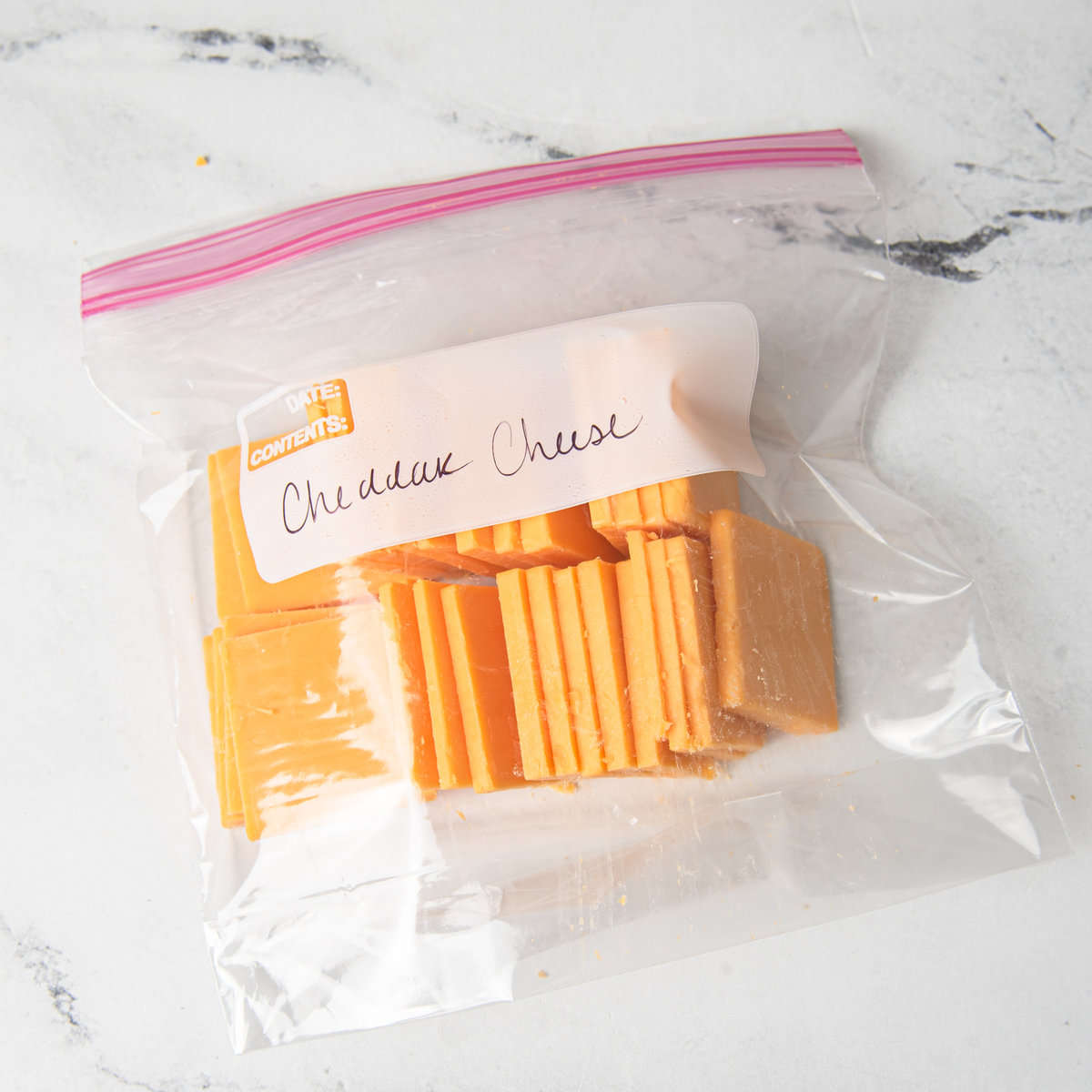
How to Store Cheese
Cheese in its original packaging can stay fresh for a long time in the fridge, so you should keep it in there and use it before the expiration date. But what about cheese that has been opened, or cheese you buy fresh and isn't vacuum sealed?
The following tips should help you decide how to store cheese:
- Plastic wrap can give cheese a plastic taste and suffocate it, so it's best to remove it from the original packaging if it's not breathable.
- Wrap the cheese in parchment paper, wax paper, or cheese paper, ensuring every part is covered. This allows it to breathe without drying out.
- You can wrap leftover cheese in the same way, ensuring the cut surfaces are covered.
- If you're concerned the cheese might pick up other odors from the refrigerator, you can put the parchment paper-wrapped cheese in a partially sealed plastic bag, loose cling wrap, or in a plastic container with the lid half off.
- Prepared in this way it will stay fresh in your cheese drawer for up to a month.
- Don't keep the cheese on a shelf if you have no cheese drawer - the slightly warmer temperature of a drawer and higher humidity makes it the best choice.
- You can keep it in the crisper drawer or in a tightly covered glass or plastic container on a fridge shelf if that's the only space you have.
- As hard cheeses last longer than soft ones, you might find a soft cheese starts to smell bad after just a week, in which case throw it out.
- It's fine to cut off a little mold with a knife and consume the rest of the cheese, except if the mold is gray or black in which case throw the cheese away.
- Don't keep cheese next to onions, melons, or other foods with strong smells, since this will negatively impact the taste of your cheese.
- Soft cheese can be kept in an airtight container for up to 2 weeks.
How to Tell if Cheese is Bad
Since different cheeses have different smells and appearances, it isn't always straightforward to determine whether or not cheese is bad. After all, the blue color in blue cheeses is a type of mold and some cheeses smell terrible to some people (and wonderful to others!)
There are a few guidelines to follow though. Any change in the color, smell, or texture of the cheese can mean it's going bad. If it's gone green, gray, or brown, smells horrible, or has gone slimy, it's definitely bad and should be thrown out. Mold is fine on hard cheese and can usually be cut off (unless it's dark-colored) but mold on soft cheese or a cheese spread means it's gone bad.
Common Questions
Some items made with cheese are fine in the freezer, including pizzas, frozen lasagna, and so on. But what about freezing blocks of cheese? Can cheese lovers do that? The answer to that is it depends on the cheese. Mozzarella blocks or the shredded kind freeze well but tend to be crumbly when thawed.
Ricotta and cottage cheese also freeze but thaw grainy. Deli-sliced and prepackaged sliced cheese can be frozen with parchment paper between each slice before wrapping the whole thing in aluminum foil and then putting the cheese in a freezer bag.
You can also freeze cheese you grate yourself as long as you squeeze the excess air out of the bag first. Keep in mind that thawed cheese will always have a slightly different texture so its best used for cooking. However, if you have too much cheese, it's a good idea to freeze it since a change in texture is way better than having to throw the cheese out.
If you're planning grilled cheese with tomato soup, a pizza or a tuna melt, you might be wondering what options there are apart from mozzarella. Younger semi-soft cheeses tend to melt better than aged ones because they contain more moisture. Choose from American cheese, cheddar, fontina, gruyère, raclette, or taleggio.

Interesting Facts
- The term for someone who sells cheese is a cheesemonger.
- Tropical tree seeds called annatto are added to some cheeses to give them an orange color.
- Tyrosemiophilia is the term for people who like to collect cheese labels.



